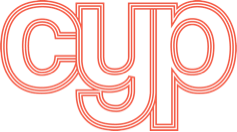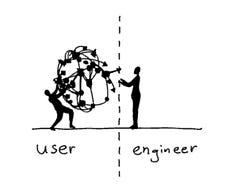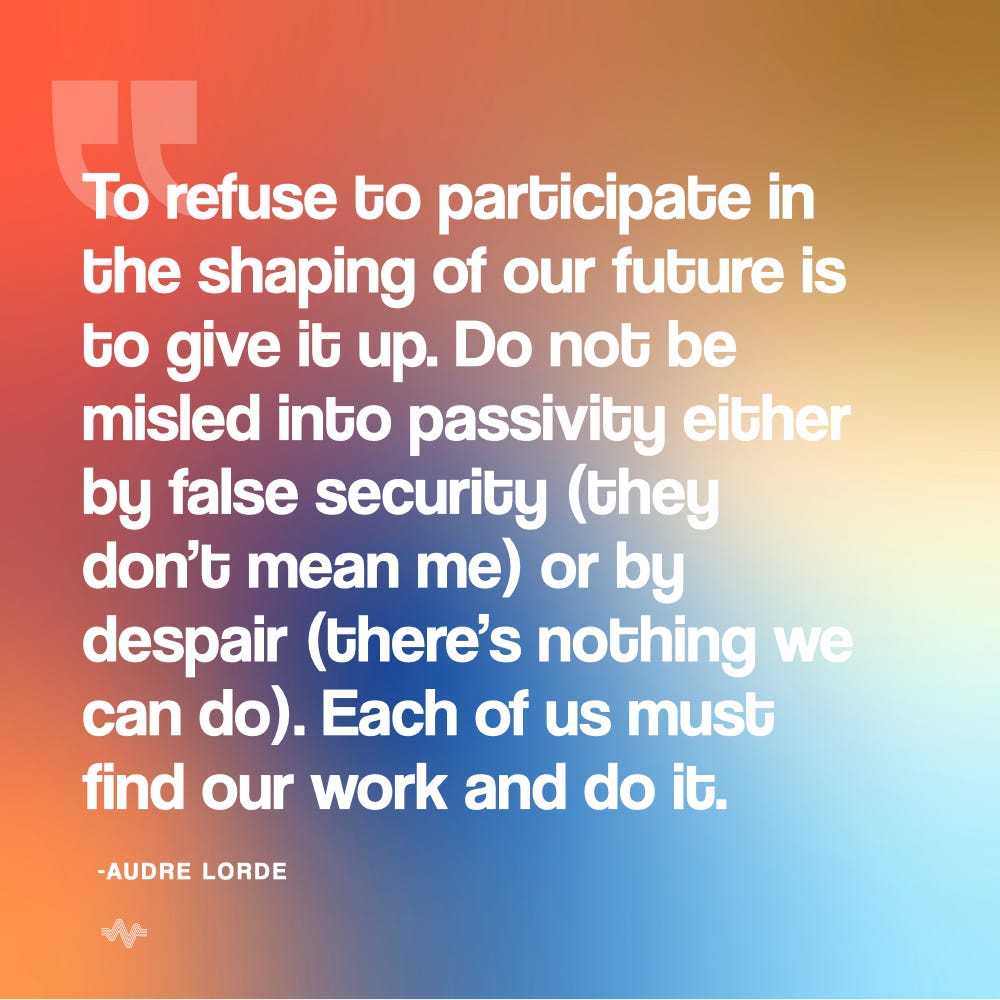 |
Hi, I’m Sari Azout and you’ve signed up for Check your Pulse, a tech and startups newsletter designed to make you feel human. I try to make this one of the best emails you get every two weeks(ish). If you’ve been sent this email and you’re not a subscriber, you can subscribe by clicking this big red button:
Happy Tuesday, friends.
When you start anything from scratch, you begin in a world of infinite possibilities. But most people don’t start from scratch, they begin with tools. Tools that make things easy — but only in a certain way. Tools that have a simple appearance, but can make us blind to the incentive structures and value systems they are built on.
If you want to start an online store, you go to Shopify. Not because there aren’t more imaginative ways to sell things online (there are), but because anyone with an internet connection and a bank account can set up an online store in minutes.
If you are prototyping an app, you start with tools like Invision, which make it really easy to quickly illustrate an idea but also constrain what can be achieved — if there is no carousel widget then that interaction is obliviated.
In Issue #51, we addressed the trust shift away from institutions and towards individuals. The reasons for this are varied — but tools have a lot to do with it. We didn’t have easy to use tools to make an independent career possible before, we do now.
This same line of thinking applies to venture capital. It’s not that all startups should raise venture funding. In fact, most shouldn’t. But the dearth of alternatives have made even the most unsuitable companies cave in.
Because here’s the thing: when something is easy, people will do more of it.
Which begs the question: How many things have not been put together into a UX that can generate the kinds of outcomes we want?
Imagine the following:
What if the LMS systems schools use embedded student-centered learning into the system’s logic, instead of the teacher-centric learning we’ve grown accustomed to?
What if word of mouth marketing could be programmed as easily and ubiquitously as Instagram ads? (Swaypay is an early stage startup working on this — a great memo on them here. By rerouting advertisement dollars retailers spend back into shoppers' pockets, they are converting social influence into a globally accepted currency, and unlocking a new distribution channel for brands.)
Imagine how your life and career choices would change if there was an easy way to pool 1% of your future income with your ten smartest friends?
What if every teacher was able to take a tiny percentage of their students' future earnings?
We have hundreds of tools for planning trips and sticking to a budget. What if we had better tools to help us answer life’s most important questions like: how can we raise better children?
Roam, the note-taking tool that recently announced a $10m Series A is allocating 10% of their equity raise to their biggest fans and building out a Reg-D crowdfunding portal to achieve this. What if this was accessible to every company, without hefty legal fees and complicated paperwork? Carta simplified equity and stock options, but no one has done the same for distributed ownership infrastructure.
In the U.S. we purchase books just like we purchase any other good. In China, readers can access up to ⅔ of a book for free and only pay to unlock the ending. Imagine how many more books we’d read in the U.S. if that were the case.
Bottom line is this: the tools we use constrain and expand our thinking, and consequently shape outcomes.
Another way to foreground this relationship between tools and outcomes is to point out how the possibilities available to us determine the boundaries of what we do and who we become.
My son’s closet is full of organic, linen-y, ochre colored clothes and minimalist sweatshirts that say things like “Good Human”. If he was aware of the possibilities, he’d be wearing loud, rainbow-colored everything with superheroes plastered all over. But he can only pick from options that exist.
He doesn’t see — let alone understand — that behind the scenes is a mom clinging to a wholly unrealistic aesthetic.
Patrick Collison said: “End-user computing is becoming less a bicycle and more a monorail for the mind.”
What he meant is that end-user software increasingly operates behind bulletproof glass and it is getting harder for people to manipulate the application’s logic.
Does this mean we should build fully programmable applications? I don’t think so.
I am a happy customer of Hey, the very opinionated email client. You can get most of the benefits of Hey using advanced features in Gmail. But I pay for Hey because it’s easy, I’m lazy, and I’ve bought into their point of view.
People that suggest Twitter and Facebook should be fully programmable for the end user underestimate that the vast majority of people want something ready for them.
We went from simple technology with complicated UX to complicated technology with simple UX.
 |
 |
The solution isn’t going back to complicated UX.
Personally, I’m more excited to see domain-specific, opinionated software products that stand for something, are non-neutral, proudly espouse their values and champion transparency. Transparency would imply doing things like disclosing in plain English how algorithms work, how they’re used, and giving their customers a voice in how the product works.
Sixteen years since the launch of Facebook, we can better understand the far-reaching impact of small design choices. We can also internalize the aphorism — “We shape our tools and afterwards our tools shape us.”
So many of the tools we use today were a result of random historical accidents or the personal agenda of a select few.
If you’re still with me, the silver lining in all of this is that if we believe the tools we shape shape us, it follows that a different toolkit can alter the incentive landscape and ultimately shape culture.
✨
Sari
 |
 |
If you missed it, I shared lessons learned writing this newsletter in this fun little tap essay. Wonderful readers like Josh Spector (who writes the most actionable newsletter I’m subscribed to) and Tom Critchlow (an indie consultant creating a very Internet-y career) commented. 📩
Otis (the fractional art investing app) partnered with MSCHF (the hard to describe Internet culture brand) to drop Medical Bill, paintings of real medical bills that are sold to erase medical debt. What a commentary on the U.S. healthcare system! 🏥🖼️
I Know a Spot, a newsletter about architecturally interesting homes for sale, is fulfilling all of my escapist fantasies. 🏠
Love this advice via Lisa Feldman Barrett: Want to help someone when they’re anxious? Ask them if they want empathy or they want a solution. ✨
We are living in two economies: Americans saved a stunning $3.2 trillion in July, the same month that more than 1 in 7 households with children told the U.S. Census Bureau they sometimes or often didn’t have enough food. More than a quarter of adults surveyed have reported paying down debt faster than usual, while the same proportion said they have been unable to make rent or mortgage payments or pay a bill. 💔
Sophia Amoruso (founder of Nastygal and Girlboss) launched Business Class and I’m feeling the vibe. 🔥
A great report on what a post social-media era looks like by CYP reader Severin Matusek TL;DR: 👇🏽
 |
 |
A solid guide to building a membership business. Journalism is facing both a trust crisis and a sustainability crisis. Membership answers to both. 💯
Mario Gabriele predicts a forthcoming wave of embedded finance in Disappearing Banks. "Banking is necessary," Bill Gates once said, "banks are not." Embedded finance frees the former from the latter. Perhaps we will swipe the Joe Rogan card to receive cashback on podcast hosting, collect an Addison Rae loan to finance film school, cover our psychiatric appointment with a Goop mental health insurance policy, or store our savings in a Jon Favreau/PSA account. 🏦
Startups on my radar 🚀:
Collab.Land: A pre-launch community management system that helps you add an incentive layer to your chat groups. Sounds like Slack for the Participatory Economy and I’m intrigued.
Outfit: DIY renovations in a box — materials, tool rentals, and instructions delivered to your door.
Otherside: Generate full-length emails by simply typing the key points you want to get across.
With: A unique business model that helps small businesses become property owners.
 |
 |
If you’re wondering who’s behind this newsletter:
My name is Sari Azout. I am a design-thinker, strategist, and early stage startup investor at Level Ventures and Rokk3r. My mission is to bring more humanity and creativity to technology and business.
Want more?
Follow me on Twitter, Medium, and Instagram.
Know a founder i should meet?
Drop me a note at sari@level.vc
If you're enjoying this newsletter, I'd love it if you shared it with a friend. You can send them here to sign up.
And if you come across anything interesting this week, send it my way! I love finding new things to read through members of this newsletter.
Thanks for being here!


